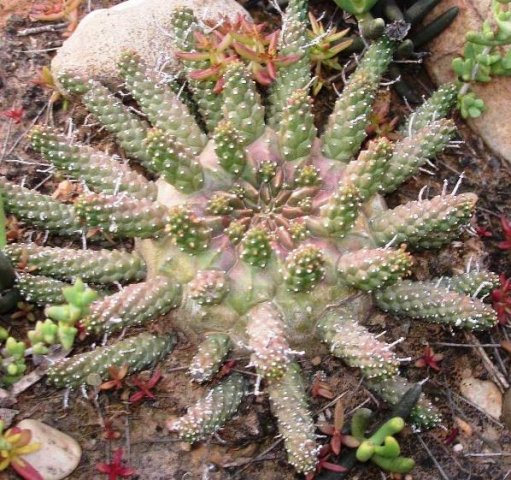Euphorbia gamkensis

Author: Ivan Lätti
Photographer: Judd Kirkel Welwitch
Euphorbia gamkensis, in Afrikaans known as melkkoei (milk cow), is a perennial shrublet that reaches heights around 10 cm. It grows a large, more or less cylindrical underground caudex or tuberous stem that may exceed 6 cm in diameter.
The plant has only been recognised since 1999, believed to be part of E. crassipes, and today possibly sunk into E. decepta, but maybe not yet finally.
Above-ground, a few rows of outwardly pointing thick, succulent stems grow on the often flat green top of the caudex. The outer row of stems are the longest, the oldest; new stems emerge in the centre as the plant grows in width. Scattered whitish stalks can be seen on the older stems where small greenish-yellow cyathia had bloomed in the past. The stems are covered in rhomboid tubercles, small rounded sections that bulge on the stems and multiply as new ones emerge from the centre at the top. The top parts of the stems are the greenest here, being the youngest.
The species distribution is restricted, only between Oudtshoorn and Calitzdorp in the Little Karoo.
The habitat is succulent Karoo, arid slopes and flats. The status of the plant's population in nature is unclear early in the twenty first century, affected by uncertainty of its separate species status and possibly by the small geographical distribution (Frandsen, 2017; Vlok and Schutte-Vlok, 2015; iNaturalist; www.bihrmann.com; http://redlist.sanbi.org).

